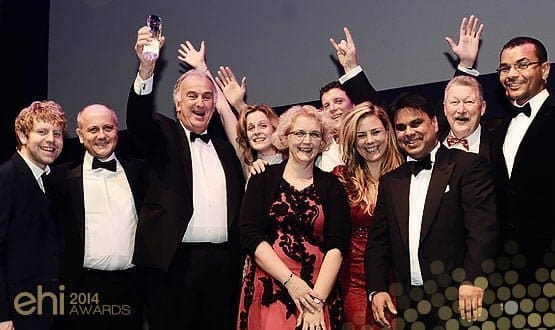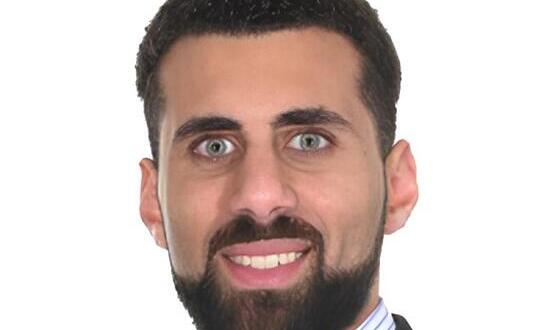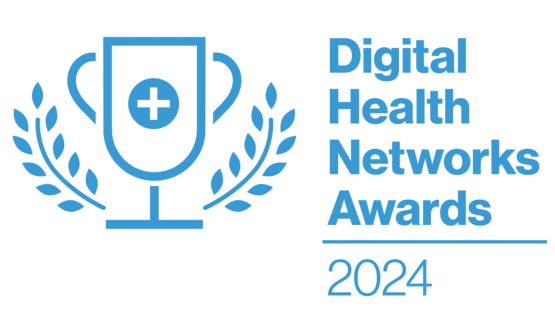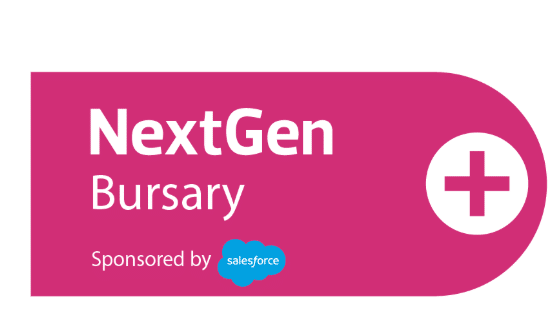EHI Awards 2014: Top stuff
- 26 November 2014

To describe the history of IT at Barts Health NHS Trust as “complex” is an exercise in understatement.
The trust has only existed in its current form since 2012, when Barts and the London NHS Trust merged with Whipps Cross University Hospital NHS Trust and Newham University Hospital NHS Trust.
The merger created one of the largest trusts in the country, covering 2.5m people, many of them living in the poorest parts of the capital. It also brought together three organisations with very different experiences of IT.
Barts and The London’s implementation of Cerner Millennium in 2008 was catastrophic; but it had recovered from its National Programme for IT experience and was making fairly extensive use of the system by the time of the merger. Newham had its own version of Millennium and Whipps Cross was still working largely on paper.
The trust, supported by its chief clinical information officer, Dr Charles Gutteridge, and his team of four clinical information officers, has sought to simplify its IT and move all three organisations – and four hospitals – forward.
It is now working to move all of its sites onto a single version of Millennium, to push towards paperless working, and to create new links with its healthcare community. All of which helped it to win ‘digital trust of the year’ at the EHI Awards 2014.
A&E, leading the way
David van Heel, one of the trust’s clinical information officers, and a professor of genetics at Barts and the London, says one of the starting points for the work was A&E.
The Royal London’s emergency department has been completely paperless for more than two years, and this has given others the confidence to follow in its wake. “Once it was stable, others took the lead.”
Now, when the trust talks about departments working on integration, it applies what Dr Gutteridge calls “the A&E test” – whether, if a patient attends the emergency department at 3am, the relevant data is available to the doctor assessing them without fail.
To illustrate why this is so important, van Heel tells a story about a patient who collapsed on the street and was picked up by an ambulance. The crew could not find a pulse and had no idea what was wrong with her.
“Her name was found from her purse and typed into the Millennium system. It found that she had been seen earlier with breathlessness and other symptoms.
“She was diagnosed as having a pulmonary embolism and she made a complete recovery; walking out of the hospital with anticoagulants. If we’d been using paper records, they wouldn’t have arrived in time to make a difference.”
Bridging the paperless – paper heavy gap
The emergency department is not the only area taking the paperless drive to heart. Shafi Ahmed, a consultant surgeon for digestive diseases, says his department became the first to eliminate paper notes.
It now works digitally for all patient interactions, from visiting ED, to attending an outpatient’s appointment, having tests, undergoing an operation in the day unit, and being admitted to a ward.
“We gave ourselves a month to do it,” he says. “We could have done it in stages, but we thought: ‘Let’s get the whole team on board from day one and we can do this together’.”
Ahmed says a critical driver was to address the digital maturity gap between the paperless A&E and paper-reliant wards, which had left it needing a dual approach to managing patients.
By getting nurses, physiotherapists and other staff to enter all their decisions directly into Millennium, the department created a “seamless transition” for a patient coming through A&E and outpatients.
Ahmed says the EPR has created a complete pathway from a medico-legal perspective, removing the problems that could be caused by “erratic information and erratic notes”, while also giving nurses ready access to patient information wherever they are in the hospital.
“Whichever ward you’re on, you can work out what’s required and set the task rather than going back to the ward and wasting your time walking around.”
Sharing the load
The four clinical information officers appointed last May to help Dr Gutteridge each have a separate site and different responsibilities, depending on their location.
At Whipps Cross, the aim has been to guide staff through the Cerner implementation, while at Newham the focus has been on aligning thinking and working practices with those at The Royal London and at St Bartholomew’s Hospital, and with preparing the hospital’s systems for integration into the Barts Health domain.
At Royal London and at Barts, the clinical information officers have also been broadening their focus, with an effort to convince academics about the benefits of point-of-care data collection.
Gutteridge says the clinical expertise of his “four amigos” has been invaluable in convincing sceptical colleagues about the benefits of moving into the digital world.
“It’s very easy for individuals to get lost in the morass of such a huge organisation, so it’s important to have five people who have a connection with clinical stuff and aren’t just doctors,” he says.
Extending integration
Barts Health wants to do more than move to a single instance of Millennium and get people thinking about the benefits of paperless, however.
In November 2013, the trust went live with Cerner’s Health Information Exchange. This works with Healthcare Gateway’s Medical Interoperability Gateway to give hospital clinicians a summary of a patient’s GP record, held in Emis systems.
According to van Heel, nearly 90 practices are signed up to a two-way data sharing agreement that enables trust clinicians to see a ten-page summary of the GP record, with a patient’s consent.
Adoption is highest at practices in Tower Hamlets and Newham, where there is a “90% chance” that the trust can see a patient’s records. However, the head of the NHS Waltham Forest Clinical Commissioning Group has said it intends to sign up to the data-sharing agreement.
“Now we have access to live GP data through the HIE, the benefits of using the Millennium system are apparent to everyone,” van Heel says.
Dr Gutteridge still wants to go further. He argues that the MIG gives the trust “a platform which, at least in principle, can interoperate with many other integration engines and connect to other hospitals.”
Barts Health has already been working with Homerton University Hospital NHS Foundation Trust and is “pretty much on track to connecting up” to share structured data, such as prescribing and encounter data, as well as lab imaging.
“Soon, we’ll begin to see the sharing of information from hospital to hospital, GP to GP, and in the not too distant future from hospital to patient,” Dr Gutteridge believes.
The Glass is full
The trust’s emphasis on IT has supported other breakthroughs. In May this year, Ahmed became the first surgeon in the UK to livestream a surgical procedure using Google Glass eyewear.
The procedure was watched by 13,000 surgical students from 115 countries. Using a computer or mobile phone, they could type-in questions that were shown on the side of the glasses, to which Ahmed could respond verbally.
He says the mature state of the trust’s IT infrastructure provided the backbone for the project. “When you deliver a big project like that, there are normally a lot of questions asked, and I don’t think it could happen in any other place so quickly – they turned it around in weeks.
“It wasn’t a matter of whether we could: they said, ‘Good, we’d like to help you, now how can we make it work?’ ”
Moving ahead, lessons learned
Even so, Dr Gutteridge says the trust is working to make sure that all of its hospitals get the latest possible upgrades to the system. “All clinicians complain to some extent that using their health IT software doesn’t feel like using Google or Facebook,” he says, “but the upgrades can help with that.”
For instance, he says the next version of Millennium will include improved mobile access, a significant addition for the trust.
Barts Health is also working with Cerner on designing an e-prescribing and medicines management module – a crucial part of any EPR – and plans to start rolling it out in March next year. “It won’t be a big bang approach; it’ll be a fast serial approach.”
The Millennium EPR advances will be baked into two major infrastructure projects. A new, state-of-the-art Barts Heart Centre, combining specialist cardiovascular services from Barts and University College London Hospital on one site, serving all of north London, will be paperless when it opens in early 2015.
The trust’s outpatient services are also being moved into a new site at the Royal London Hospital, and van Heel says the clinics will function as “paper-light” with Millennium in use.
In addition, the trust’s work on its EPR has put it in a good position to make bids for major health IT projects. These include Genomics England’s 100k Genome Project to sequence the genomes of up to 100,000 patients and link these with their electronic patient records, to create anonymised data sets.
“We were asked to put in a bid, but they said we needed to have SNOMED codes for patients with rare diseases, and we were just laughing at the requirement,” van Heel says.
Speed, clinical support and hard work
Asked to provide a lesson that other trusts can learn from Barts’ success, Gutteridge says time is of the essence.
“You have to try to get speed into solution building – it’s easy to lose clinicians if you don’t keep upgrading to new solutions.
“It’s not about putting the systems in someone’s hand and saying: ‘You have to use them’. It’s about going in and saying to people: ‘This is how you can use them and these are the clinical benefits you can get’.
“When we first implemented Millennium in the emergency department, they said the whole department would fall over. Now, if we told them we were switching it off, they’d kill us.”
Ahmed offers a blunt but straightforward addition to his CCIO’s message, an addition that many trusts will agree with. “It’s not an enigma – it all pretty much comes down to hard work.”




